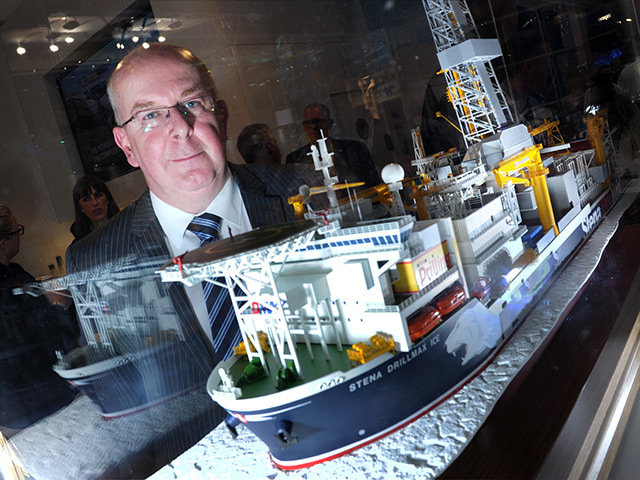
The offshore industry must put more effort into dealing with risks that can potentially to lead to a major accident, according to DNV, the risk management outfit.
The firm’s business development VP for Europe and North Africa, Graham Bennett, warned at Offshore Europe that it is difficult to obtain clear statistics for major accident hazards in the same way as for occupational safety where major improvements have been recorded lately.
Mr Bennett said that analysis of what data is available points to a steady number of events worldwide – around 70 per annum – with no discernible improvement.
“We don’t have a common set of metrics,” he said. “The level of knowledge isn’t where we would like it to be.”
Mr Bennett said major accident hazard statistics are “poorly reported” across the industry and that the lack of a common way of expressing associated data makes it difficult to benchmark.
Mr Bennett pointed out it was DNV – a global provider of services for managing risk – that did the forensics on the Deepwater Horizon disaster in the Gulf of Mexico and that there was therefore ample data covering that incident.
However, he said that this was not always the case, such as the almost total lack of information regarding the loss of the Aban Pearl off Venezuela in 2010. A blanket ban on coverage of this incident was imposed.
Mr Bennett said thatdespite the disappointing global trends for major accident hazards, there are regions where there is an improving performance trend, including the North Sea.
Both the UK and Norway have implemented stringent reporting requirements for all offshore leaks, both liquid and vapour.
For example, the UK HSE (Health & Safety Executive) data-set has recorded over 3,500 leak events at close to 300 installations since 1992.
A major leak is a key cause with the potential to lead to a major hazard accident.
Referring to last year’s Elgin field emergency, Mr Bennett said the gas leak was several times the size of that of Piper Alpha, which blew up 25 years ago, but Total’s emergency shut-down procedures “all worked correctly”.
According to UK records, major leaks have shown a steady decline from 19 per year to two per year over the past 15 years. The position is similar for Norway.
“The combination of the absence of major disasters in the past 24 years and the reduction in major leaks supports the view that the North Sea has achieved an order-of-magnitude reduction in major accident hazards,” says a new DNV report, launched yesterday.
“This observation was confirmed by the Oil Spill Commission, which assessed the BP Deepwater Horizon.
“In its report on that disaster, the Commission observed that, from 2004 to 2009, fatalities in the offshore oil and gas industry were more than four times higher per person-hours worked in US waters than in European waters, even though many of the same companies work in both areas.
“This striking statistical discrepancy reinforces the view that the problem is not an inherent trait of the business itself, but rather depends on the differing cultures and regulatory systems under which members of the industry operate.
“It is important however that we do not become complacent. The Elgin platform gas leak in March 2012 and the Gannet Alpha pipeline leak in August 2011 both remind us of the potential for a major accident and the need for effective barriers to be in place,” the report adds.
Recommended for you
